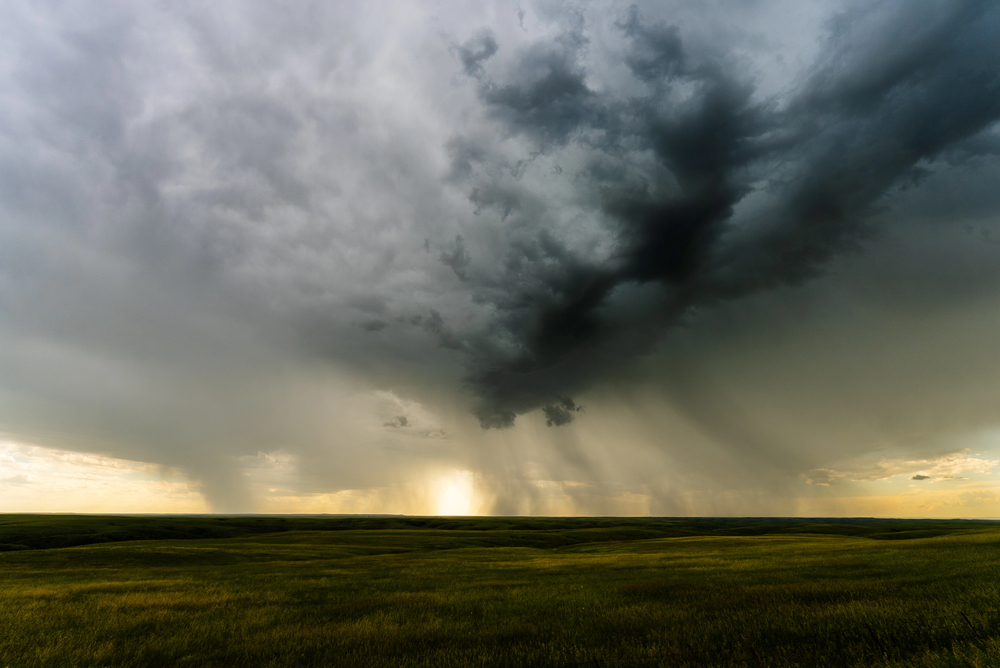How Catastrophes Are Changing Property Coverage

U.S. insurers paid out nearly $54 billion in severe convective storm claims in 2024, including tornado damages, according to the Insurance Information Institute (Triple-I). Also, wildfires consumed 8.9 million acres last year, according to a Triple-I issues brief based on data from the National Interagency Coordination Center (NICC). This is a major increase compared to the five-year average of 6.4 million acres and the 10-year average of 7 million.
In its “2025 Hurricane Risk Report,” Cotality identified more than 33.1 million residential properties from Texas to Maine—with a combined replacement cost value (RCV) of $11.7 trillion—to be at moderate or greater risk of sustaining damage from hurricane-force winds. Meanwhile, 6.4 million residential properties—with a combined RCV of $2.2 trillion—have a moderate or greater risk of storm surge flooding.
From hurricanes in the Southeast, wildfires in the West and severe convective storms in between, catastrophes are a defining feature of the current insurance landscape. As a result, property insurance is changing.

Agent Toolkit: Combat Legal System Abuse
“Many insurers are asking policyholders to share more of the risk,” says Jeff Zehr, senior vice president of underwriting, admitted business, Church Mutual. “That comes in a variety of forms—it could be terms and conditions, it could be deductibles or the removal of blanket coverage.”
In some of the most difficult property placements, “some insureds are going bare on a location that’s part of a larger schedule in order to get the rest of the schedule placed,” he adds. “The harsh reality is that some properties with the highest exposures have difficulty finding any options.”
“Therefore, proactive risk mitigation is critical. It’s not optional,” Zehr says. “It is expected, particularly with some schedules that are challenged.”
Catastrophe risk factors are becoming a larger part of the underwriting file, says Brook McGuire, product strategy lead, Liberty Mutual and Safeco Insurance. From identifying areas to mitigate losses to building a compelling underwriting narrative, aerial imagery and third-party data are tools “agents should get comfortable with and even embrace,” she says. “Leveraging those capabilities will help agents be more successful in the long run—not only in building long-term profitable books of business but also in risk selection for themselves.”
As carriers become more granular in their underwriting, many risks are being moved to the excess & surplus market, which continued its growth in 2024 with premiums up 12.1% from 2023, according to the Wholesale & Specialty Insurance Association (WSIA). Further, transactions were up 9.5% in 2024.
“If your customer is more interested in participating to a higher degree in risk mitigation or sharing of the risk through coverage, you should look at the E&S market,” says Kristina Talkowski, senior vice president, middle market commercial lines. “In contrast, to help manage the affordability of coverage in the standard commercial lines market, we’re commonly seeing wind-hail deductibles, cosmetic exclusions, roof endorsements and limitations on how long you have to report a claim.”
Of course, E&S is not without its drawbacks. “When an independent agent has to go from an admitted market policy backed by the guarantee fund to the nonadmitted market, there are a lot of errors & omissions pitfalls around that,” says Bryan Bernier, CEO of the Professional Insurance Agents of Colorado (PIIAC). “And often the premiums are a lot higher. You’re delivering bad news 99% of the time.”
“It works as long as it’s a proactive conversation and the client can be a participant by covering themselves in light of coverage limitations and exclusions,” Talkowski says.
Additionally, non-traditional solutions like parametric products are gaining traction, says Ethan Aumann, senior director, environmental issues and resiliency, American Property Casualty Insurance Association (APCIA). “Parametrics provide predefined payouts based on specific triggers—such as wind speed or earthquake magnitude—rather than actual damage, offering quicker claims resolution and encouraging proactive mitigation.”
AnneMarie McPherson Spears is IA news editor.







